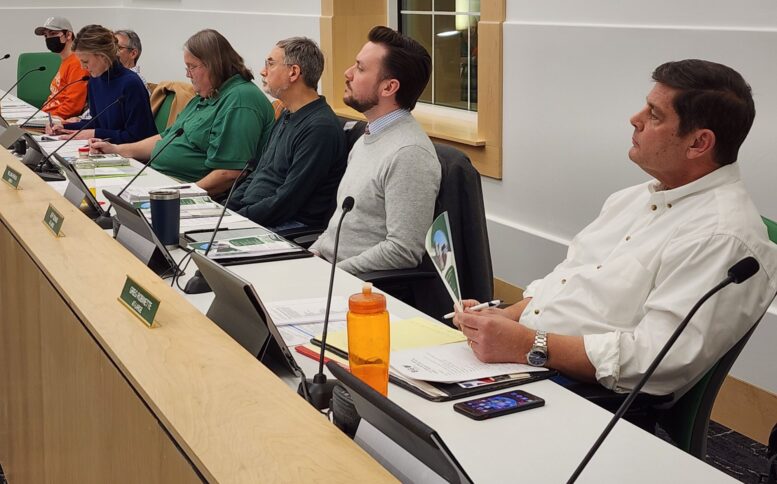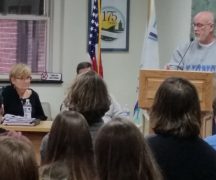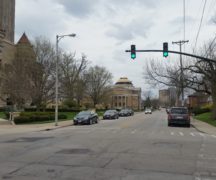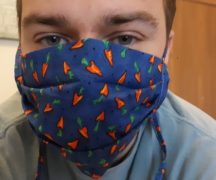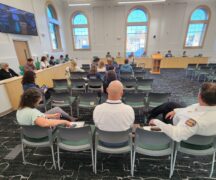By JAN McLAUGHLIN
BG Independent News
More sidewalks made the cut. A study of pedestrian and bicycling accommodations along Main Street got a nod. But a snow machine for sledders was too steep a hill to climb for Bowling Green City Council as it looked to assign some of the final American Rescue Plan Act dollars to local projects.
Bowling Green City Council President Mark Hollenbaugh said Tuesday that his goal is to be out of ARPA funds by the end of this year. An unusual statement from a city leader, until context is added that unspent or unobligated funds must be returned if not used.
And city leaders have no intention of returning any of the $7.3 million.
In addition to the already designated projects to be funded, City Council on Tuesday penciled in $150,000 for sidewalks, with the priority being to connect areas where the sidewalks end.
Council also decided to put $100,000 toward a Main Street study that will look at better ways to accommodate pedestrians and bicyclists.
However, the reception was a little chilly for council member Jeff Dennis’ suggestion that the city consider buying a snow machine that can keep Conneaut Hill in the sledding business throughout winter. The village of New Bremen was recently given a $50,000 snow machine, which is a hit with children who haven’t had much snow this winter season.
Dennis said a snow machine could make Bowling Green an attraction for families from nearby communities. But it didn’t appear that council members were convinced.
“Right now, I’m not in favor,” Hollenbaugh said.
And council member Gred Robinette wondered aloud if ARPA funding could be used for such a purchase.
The Council Committee of the Whole met earlier this week to get the status on the $7.3 million Covid relief funds awarded to Bowling Green. City Finance Director Dana Pinkert reported on the money already used, the money already obligated, the money earmarked, and the money still left to be allocated.
“To date, we have made a very positive, significant impact in the community,” Mayor Mike Aspacher said.
Here’s how the dollars stacked up:
- $7,316,778 received
- $6,937,065 designated
- $379,713 balance
- $6,490,999 obligated
- $446,066 not obligated
Money already spent or with obligations in place include:
- Nearly $4 million on street paving.
- $700,000 for owner occupied home rehabilitation program and housing grants.
- $500,000 in grants to non-profit groups.
- $20,000 for parks and rec pool fees.
- $20,000 for disc golf improvements.
- $102,065 for downtown restrooms.
- $225,000 for Crim to Carter Park shared use path design.
- $250,000 for City Park walking path and security lighting.
- $100,000 for Wood County Plays inclusive playground.
- $302,000 for MARCS radios.
- $40,000 for Safe Routes to School planning.
- $90,000 for Brim Road shared use path.
- $75,000 for a business incubator.
- $100,000 for downtown alleyway improvements.
Money designated but not yet used or obligated includes $150,000 for pickleball courts, $150,000 for a dog park, plus leftover funding from the MARCS radios, Safe Routes to School and the Brim Road shared use path.
Because the money must be contracted for by Dec. 31, 2024, and must be all used by Dec. 31, 2026, Pinkert suggested that about $300,000 of the unobligated funds be shifted to help pay for a new fire truck.
That would include the $150,000 each promised for outdoor pickleball courts and a dog park. The city would still put the same amount of money to those projects, but they won’t be under the rush of the ARPA requirements, Pinkert said.
“That just gives us more time,” Hollenbaugh said after the meeting. “It guarantees this money will still go toward them.”
Any remaining funding may be used to pay for overages in projects such as paving.

